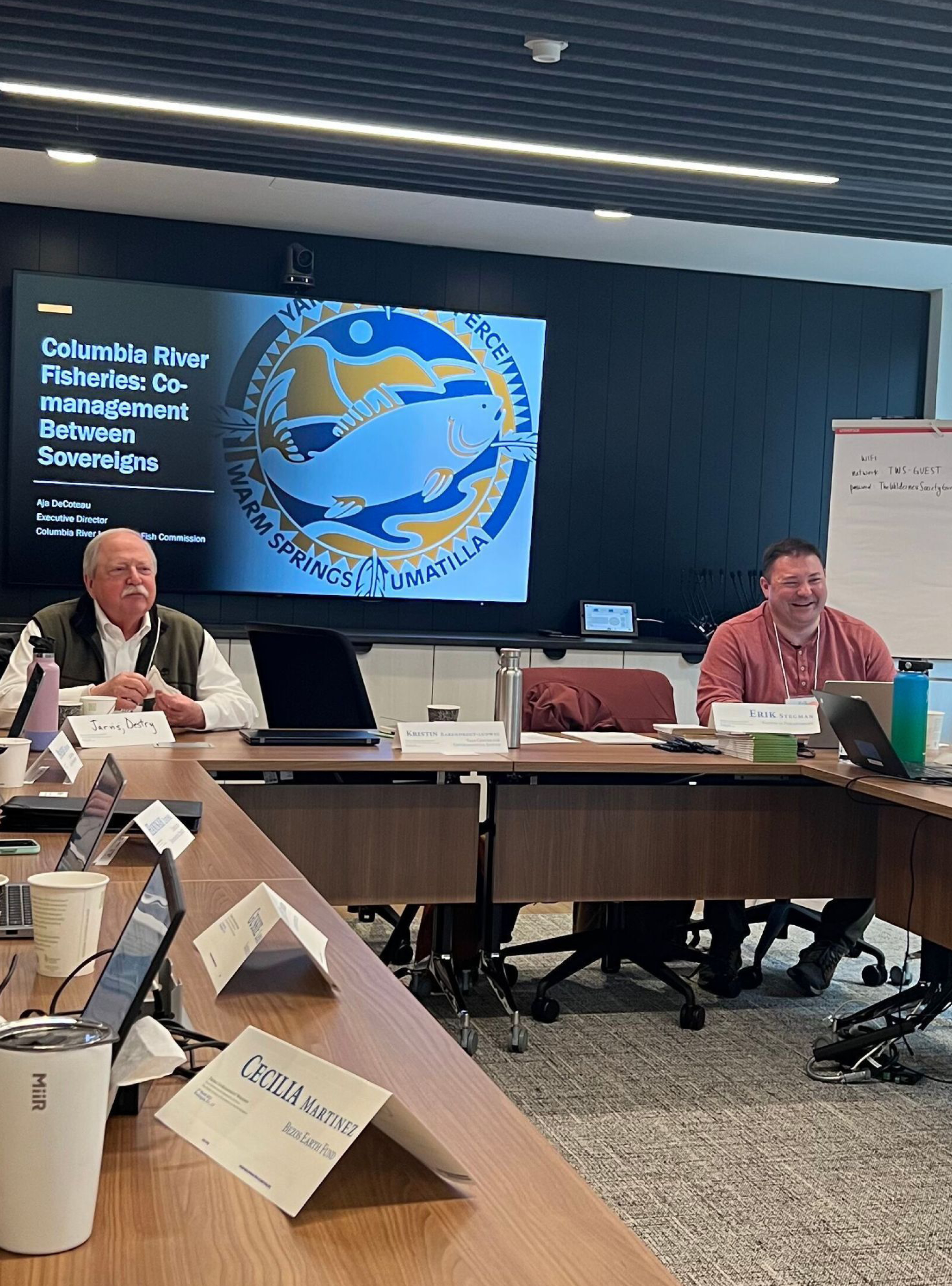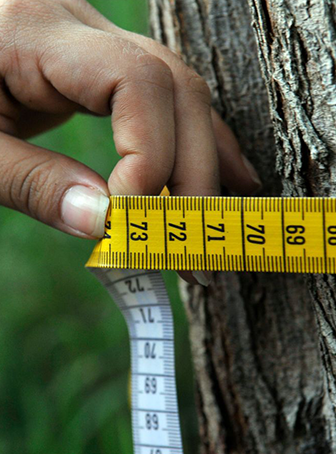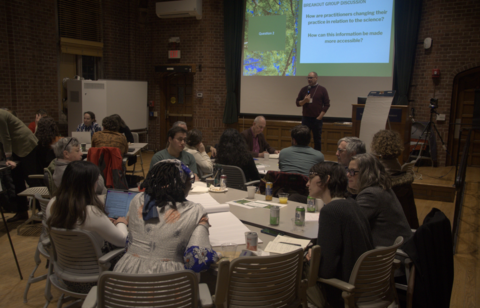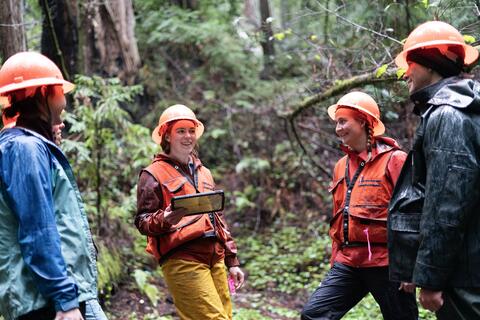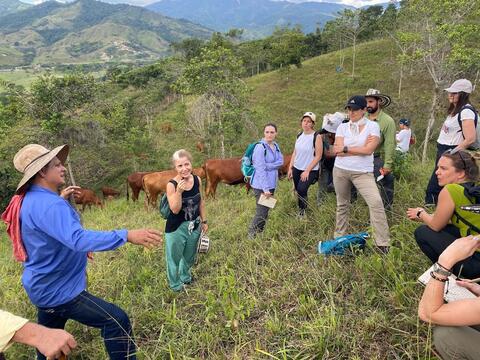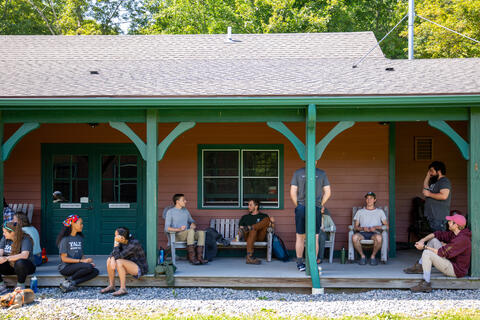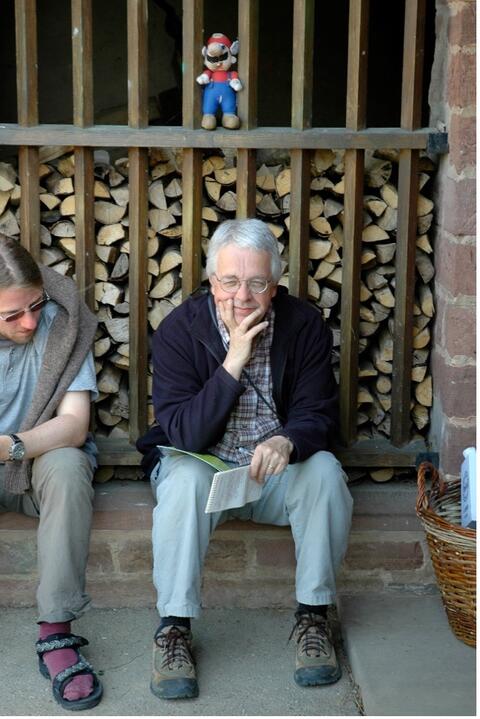
By Sara Santiago ‘19 MF
While we may have collectively been off to a slow start in the field because of the pandemic, we are now firmly planted in the United Nations Decade on Ecosystem Restoration. Attention to this effort is coming from many sectors - government, corporate, non-profit, and academic - across the entire globe. With the wave of restoration taking over, there are surely different approaches. What does it mean to conduct place-based forest conservation and restoration with respect for the culture and ecology of a specific site though? Researchers from The Forest School at the Yale School of the Environment aim to uncover just that.
“They’re planting the same species all over the world,” Meredith Martin ‘12 MFS, ‘20 PhD told the New York Times in “Tree Planting Is Booming. Here’s How That Could Help, or Harm, the Planet.” The article explains that poorly-conducted, blanket tree planting can in fact compromise biodiversity and ecosystems.
Now professor of forestry at North Carolina State University, Martin and her Yale forest scientist colleagues David Woodbury ‘19 MFS, doctoral candidate; Danica Doroski ‘17 MFS, ‘21 PhD; Eliot Nagele ‘21 MF; Mike Storace ‘20 MF; Susan Cook and Rachel Pasternack of The Nature Conservancy; and The Forest School’s Professor of Silviculture and Forest Ecology Mark Ashton address this in their paper “People plant trees for utility more often than for biodiversity or carbon” published in Biological Conservation.
Tree planting and forest restoration are widely recognized as tools to combat climate change, entrusting an entire ecosystem type to capture sufficient carbon and to curb the sixth extinction, effectively changing the course of our planet’s future. Yet Martin et al. noted that the potential of restoration is “largely theoretical because we lack detailed information of how tree planting is proceeding on-the-ground.” They therefore “compiled a pantropical dataset of 174 tree planting organizations to determine the type of organizations involved in tree planting, their geographic locations and tree planting approaches,” using referrals from the Environmental Leadership and Training Initiative. ELTI is an initiative housed in The Forest School and “likely has the largest network of tropical forest restoration organizations and people of all potential organizations involved in tropical forest restoration, and has trained over 7400 practitioners and landowners and sponsored over 485 NGOs, practitioners, and landowners in restoration courses,” according to Martin et al. (See Figure 1)

Figure 1: Original Description from Martin et al.: Fig. 1. Heat maps showing (a) where organizations have either past or ongoing tropical tree planting/reforestation projects, and (b) where organization headquarters are located. Countries on the red of the spectrum have (a) more organizations working in them or (b) headquartered there, and countries that are on the yellow end have fewer organizations working or headquartered within. We had no data for countries in grey. (For interpretation of the references to colour in this figure legend, the reader is referred to the web version of this article.)
Their results show that methods and results of tree planting on the ground are rather opaque. In recent decades, Martin et al. write, the number of tree planting organizations have increased by 288% and the number of trees planted in the past 30 years has increased by 4700%. These numbers are remarkable: “118 organizations reported planting almost 1.4 billion trees since 1961” from nearly 700 tree species in total. However, they found that in actuality a small number of trees are planted worldwide mainly for economic and livelihood reasons, rather than the stated goals of biodiversity conservation, forest restoration, and carbon sequestration. Planting for agroforestry, silvopastures, and other livelihood uses is not an inherent problem, they explain, but there is a disconnect between the intention of planting programs and the lack of reporting on their methodologies and monitoring. For example, they found only 5% of organizations report on the survival rate of planted trees.
Professor of Silviculture and Forest Ecology Mark Ashton and Professor of Social Ecology Michael Dove point to the lack of current monitoring, survival, and socio-cultural appropriateness of tree planting campaigns. In “Reversing deforestation must start with people, not trees,” Ashton and Dove warn that blanket tree planting simply won’t work. “The answer to forest restoration and conservation requires more attention not to trees but to people, including their cultures, laws, markets, and regimes of tenure,” they co-write. “You cannot plant a tree without first identifying the social niche in which to grow it and protect it. ‘Billion Tree’ programs, which naively assume a flat, global landscape, without socio-economic difference or political conflict, may produce less forest cover not more. Once we realize that money alone cannot fix this problem, and that indeed money often is the problem, then much can be accomplished.”
So how do we better approach the complex ecological and social dynamics of forest restoration?
ELTI Director Eva Garen ’95 MESc, ’05 PhD explained to the YSE Office of Communications that: “There’s a lot of global strategies now focused on doing massive, large-scale restoration that try to find technical fixes and silver bullets, like let’s just plant trees. But it’s a red flag. You should ask, who’s going to implement and manage the restoration? Who lives on the land? Who manages and has rights to the land? These landscapes are influenced by complex histories, culture, and power dynamics — and that context is often overlooked. And when they are overlooked, you have these ill-conceived technical fixes that can end up causing a whole lot of unintended consequences. These projects usually don’t work because they don’t account for the complexities of the region.”
Therefore, Garen and a team of researchers created “The Political Ecology Playbook for Ecosystem Restoration: 10 principles for effective, equitable, and transformative landscapes.” The playbook is uniquely authored by intersectional, female researchers, who are calling on the UN Decade on Ecosystem Restoration to “address the root causes of deforestation and environmental degradation: ongoing and pervasive structural inequities.” Tracey Osborne, Samara Brock ‘22 PhD, Robin Chazdon, Susan Chomba, Eva Garen, Victoria Gutierrez, Rebecca Lave, Manon Lefèvre, doctoral candidate at YSE and Department of Anthropology, and Juanita Sundberg collectively look at forest restoration through a political ecology lens, one that explores the power dynamics and the social, cultural, and economic conditions that dictate restoration, not simply the biophysical and ecological ones.

Figure 2: Original Description from Osborne et al.: Fig. 1. Ten Principles of the Political Ecology Playbook for Ecosystem Restoration.
“The political ecology playbook for ecosystem restoration: Principles for effective, equitable, and transformative landscapes” published in Global Environmental Change argues that tree planting, forest restoration, and deforestation are not apolitical issues. The 10 principles of the playbook (See Figure 2) capture local, national, and international scales for just, equitable restoration that is not one-size-fits all but rather meant to align the needs of specific people and places.
This example of applied social science was born out of Yale’s International Society of Tropical Foresters annual conference held in February 2022, which served as a platform to gather the researchers who then wrote the playbook. This is the longest student-run conference at Yale. ISTF, a student interest group at The Forest School, has their finger on the pulse to the urgent questions related to the world’s tropical forests and their peoples. This past year’s conference, “Rethinking Restoration and Recovery: Landscapes of the Past, Present, and Future in the Tropics” continued questions related to forest restoration.
Senior Research Scientist, Director of the Program in Tropical Forestry and Agroforestry, and longtime ISTF mentor Florencia Montagnini along with her students and alums of the School have also been considering another approach to restoration: biodiversity islands.
Brett Levin ‘19 MEM, Sara del Fierro ‘20 MEM, ELTI Affiliate Zoraida Calle, Irene Montes-Londoño ‘17 MFS, Gabriela M. Morales-Nieves ‘20 MF, Karam Sheban ‘20 MF, Ruth Metzel ‘16 MF/MBA, Emily Sigman ‘21 MF/MA, Ryan Smith ‘22 MF, Benjamin Everett-Lane ‘23 YC, and Dara Albrecht ‘23 YC are amongst the Yale affiliated scholars who contributed to Montagnini’s most recent book, “Biodiversity Islands: Strategies for Conservation in Human-Dominated Environments.” Montagnini and Levin define the term biodiversity islands as “ecological refuges where plants and animals can thrive without major interference from human activity, thereby providing ecological, economic, and social benefits at the ecosystem, landscape, and global levels.” This does not mean biodiversity islands are not present in human-dominated landscapes but rather the opposite.
Trained at The Forest School, the authors demonstrate that biodiversity islands exist all over the world for conservation and regeneration across landscapes. Their works generally focus on North America and Latin America with global examples, including Morales-Nieves’ study on the services of a community forest in Mayagüez, Puerto Rico, Sheban’s focus on preserving biodiversity in Appalachian forests through permit-based harvesting of botanicals, and Sigman’s exploration of safeguarding biodiversity islands in Northern Ethiopia amidst political change.
In valuing both people and forests, The Forest School aims to cultivate research and practice that is place-based and experientially informed. If our societal efforts are to restore degraded forests and marginalized lives and livelihoods, we must consider the lessons of focusing on the political drivers of deforestation and restoration alongside the ecological processes of restoration in this decade of restoration.
